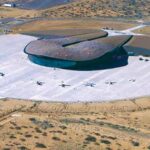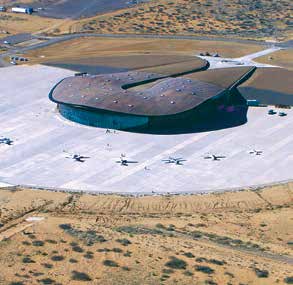Spaceports
U.S. Spaceports
2019 TSRQ4 – Infrastructure: Spaceports


Spaceport upgrades and new spaceport development are at an all-time high, with 40 active launch sites around the globe, 10 more in development in the United States, Sweden, Australia and Canada, and 13 more proposed in eight countries. . .
2017 – U.S. Spaceports – Snapshot
During 2017, five spaceports were used by U.S. orbital launch operators: Cape Canaveral Air Force Station (CCAFS), Florida; Kennedy Space Center (KSC) . . .
2016 – U.S. Spaceports – Snapshot
Three spaceports conducted orbital launch operations from the United States in 2016: Vandenberg Air Force Base (VAFB), Cape Canaveral Air Force Station (CCAFS), and the Mid-Atlantic Regional Spaceport (MARS). CCAFS conducted 82% of the nation’s orbital launch attempts, while VAFB was responsible for… Thank you for visiting The Space Report! The Authoritative Guide to Global…
2015 – U.S. Spaceports – Snapshot
In the United States and its territories, 42% of the spaceports have active launch site operator licenses granted by the U.S. Federal Aviation Administration (FAA). The remaining 58% of U.S. spaceports are either proposed, in development, or government-operated. Of the 24 current and future spaceports, 14 were used to conduct orbital or suborbital launches in 2015.
2014 – U.S. Spaceports
SpaceX, builder of the Falcon 9 space launch vehicle, broke ground in September 2014 for a new spaceport near Brownsville, Texas. While actual building activity is not scheduled until later in 2015, SpaceX plans to launch from the site as early as 2016. Once construction on the site is completed, it would be the closest launch site to the Earth’s equator on U.S. soil.
2013 – U.S. Spaceports
Kennedy Space Center (KSC) and Cape Canaveral Air Force Station (CCAFS) occupy neighboring sites in the state of Florida, and are responsible for the bulk of U.S. launch activity. KSC is the only U.S. spaceport that currently supports crewed orbital spaceflight and historically has been the launch site for almost every crewed U.S. spaceflight. With the end of the Space Shuttle program, KSC and CCAFS were left with an impressive assortment of NASA infrastructure that was now in search of a purpose.
2012 – U.S. Spaceports
The United States is home to several spaceports operated by the military or NASA; others are run by public-private partnerships as commercial entities. The largest and most sophisticated U.S. spaceports are the adjacent facilities of NASA’s Kennedy Space Center (KSC) and the USAF’s Cape Canaveral Air Force Station (CCAFS) in Florida. All crewed U.S. orbital spaceflights flights have taken off from KSC. Meanwhile, CCAFS serves as a launch base for missile tests and launches of military and civil government unmanned spacecraft.
2011 – U.S. Spaceports Snapshot
The Kennedy Space Center (KSC), Florida, is the only spaceport in the United States that currently supports orbital human spaceflight, and it has been dramatically affected by the end of the Space Shuttle Program. As the home of the shuttle, KSC has seen its workforce decrease significantly as the program ended. More than ## workers at KSC lost their jobs over the past two years.
2008 – U.S. Spaceports – Snapshot
Cape Canaveral Air Force Station (CCAFS) lies on the Atlantic shore of Florida, almost directly east of Orlando, and adjacent to the Kennedy Space Center (KSC). The spaceport supports a mix of government civil, military, and commercial launches. Primary users of CCAFS include the U.S. Air Force, U.S. Navy, NASA, and private launch service providers.
2007 – U.S. Spaceports
Oklahoma Spaceport received an FAA license for suborbital flights in June 2006. Blue Origin, founded by Amazon.com’s Jeff Bezos, received an experimental permit in 2006 for its West Texas launch site. The first test flight from Blue Origin’s facility was conducted on November 13 of the same year.